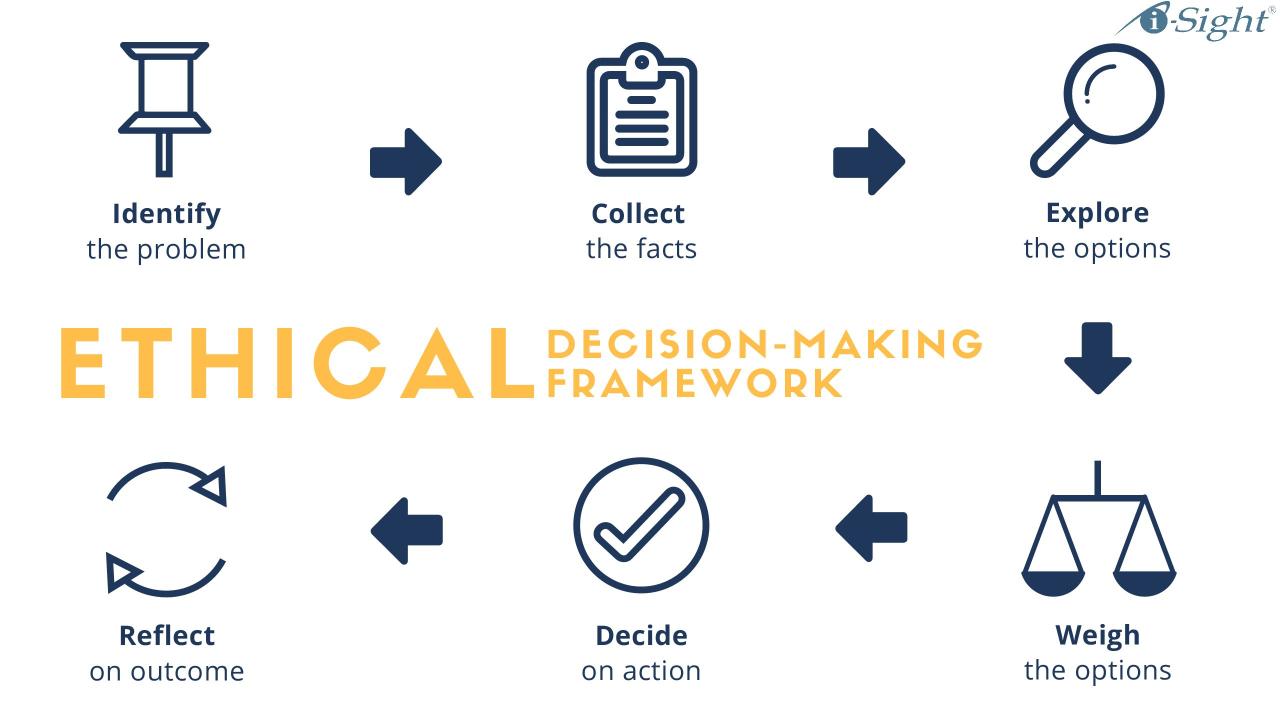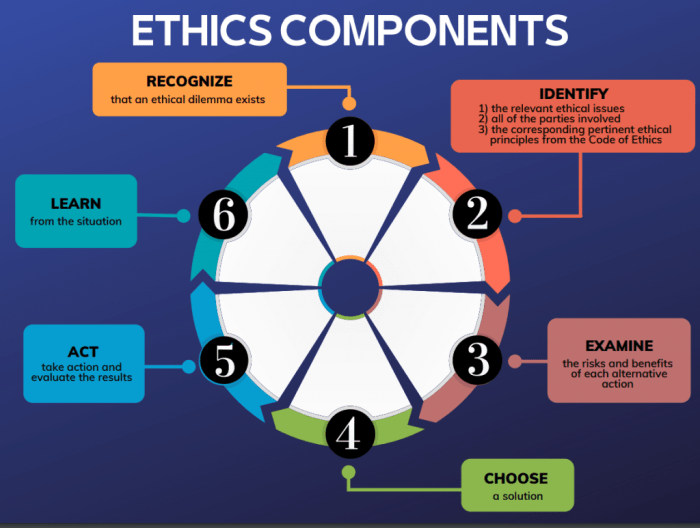Designing ethically isn’t just a trend; it’s a fundamental responsibility. In today’s interconnected world, our digital creations impact countless lives, shaping behaviors and influencing perceptions. Ignoring ethical considerations can lead to exclusion, bias, and even harm. This exploration of seven key principles will guide you toward creating inclusive, accessible, and responsible designs that benefit everyone.
From understanding user privacy and accessibility to mitigating bias and promoting inclusivity, we’ll delve into practical strategies for integrating ethical considerations into every stage of the design process. We’ll examine real-world examples of both ethical successes and failures, highlighting the tangible consequences of our choices. This journey will equip you with the tools and knowledge to design with intention and impact, building a more equitable and just digital landscape.
Understanding Ethical Considerations in Design

Ethical design is not merely about creating aesthetically pleasing and functional products; it’s about ensuring these creations align with moral principles and societal well-being. This involves considering the potential impact of design choices on users and the broader community, encompassing aspects like privacy, accessibility, and inclusivity. Ignoring these considerations can lead to significant negative consequences.
Core Principles of Ethical Design
Ethical design hinges on several core principles. User privacy necessitates protecting sensitive data and ensuring transparency in data collection and usage. Accessibility aims to make designs usable by people with diverse abilities, including those with visual, auditory, motor, or cognitive impairments. Inclusivity goes beyond accessibility, striving to create designs that are relevant and valuable to individuals from all backgrounds, regardless of race, gender, age, or socioeconomic status. These principles are interconnected; a design that fails to prioritize one often compromises the others. For example, a data-driven design that prioritizes personalized recommendations without adequate privacy controls could inadvertently exclude users concerned about their data being used without consent.
Hypothetical Scenario Illustrating Unethical Design Choices
Imagine a new social media platform designed to maximize user engagement. To achieve this, the platform uses highly personalized, targeted advertising, including the use of user location data obtained without explicit consent. Additionally, the platform’s algorithm prioritizes sensationalized and emotionally charged content, regardless of its factual accuracy or potential for harm. The consequences are significant: users may experience increased anxiety and misinformation, while the unchecked collection of location data could compromise their privacy and security. The platform’s focus on engagement over ethical considerations leads to a harmful and exploitative user experience.
Societal Impacts of Unethical Design Practices
Unethical design practices can have far-reaching societal impacts. Consider the proliferation of filter bubbles created by algorithms that prioritize confirming users’ existing biases. This can lead to political polarization and echo chambers, hindering informed decision-making and fostering social division. Similarly, biased algorithms used in hiring processes or loan applications can perpetuate existing inequalities, reinforcing systemic discrimination against marginalized groups. The lack of accessibility in online services can exclude significant portions of the population from essential resources and opportunities, exacerbating existing digital divides.
Ethical Frameworks in Design
Various ethical frameworks can guide design decisions. Deontology emphasizes adherence to moral rules and duties, regardless of consequences. For example, a deontological approach might prioritize user consent above all else, even if it reduces the effectiveness of personalized features. Utilitarianism, conversely, focuses on maximizing overall happiness and minimizing harm, potentially justifying some compromises on individual privacy if it leads to greater societal benefit. Virtue ethics emphasizes the character and moral virtues of the designer, advocating for integrity, responsibility, and empathy in the design process. Each framework has its strengths and weaknesses, and the best approach often involves integrating aspects of several frameworks.
Comparison of User Data Privacy Regulations
| Jurisdiction | Regulation | Key Features | Enforcement |
|---|---|---|---|
| European Union | GDPR (General Data Protection Regulation) | Comprehensive data protection, consent requirements, right to be forgotten | Strict enforcement with significant fines |
| California | CCPA (California Consumer Privacy Act) | Right to know, delete, and opt-out of data sale | State Attorney General and private lawsuits |
| Brazil | LGPD (Lei Geral de Proteção de Dados) | Similar to GDPR, focusing on data protection and user rights | National Data Protection Authority (ANPD) |
| United States (Federal) | No single comprehensive federal law | Sector-specific laws (e.g., HIPAA, COPPA) | Varied enforcement depending on the sector |
Practical Application of Ethical Design Principles

Ethical design isn’t just a theoretical concept; it’s a crucial aspect of creating responsible and impactful products and services. Successfully integrating ethical considerations requires a practical understanding of how to apply principles throughout the design process, from initial research to final launch. This section explores practical applications, offering concrete examples and a structured approach to ethical design.
Examples of Ethically Designed Solutions
Five specific examples illustrate how prioritizing ethical considerations shapes design solutions. These examples highlight diverse areas impacted by ethical design, emphasizing the far-reaching consequences of mindful choices.
- Accessible Public Transportation App: An app designed for public transportation includes features such as large, customizable fonts, audio announcements, and real-time location tracking with haptic feedback, catering to users with visual, auditory, and motor impairments. This prioritizes inclusivity and ensures equal access to essential services.
- Data Privacy-Focused Social Media Platform: A social media platform prioritizing user privacy uses end-to-end encryption for all messages and limits data collection to only what’s strictly necessary for functionality. Users have granular control over their data and can easily delete their accounts completely. This demonstrates a commitment to user autonomy and data protection.
- Bias-Aware Algorithmic Hiring Tool: A recruitment tool utilizes algorithms carefully designed to mitigate bias. The system uses blind resume screening, removing identifying information to prevent unconscious bias, and focuses on skills and experience rather than demographics. This ensures fairer hiring practices and promotes diversity and inclusion.
- Sustainable E-commerce Packaging: An e-commerce company uses minimal packaging made from recycled and biodegradable materials. They also optimize shipping routes to reduce carbon emissions, demonstrating a commitment to environmental sustainability and responsible resource management.
- Mental Health Support App with Safety Features: A mental health app incorporates features like crisis hotline integration, safety planning tools, and user-controlled data sharing with trusted contacts. This ensures user safety and provides vital support resources within the app itself.
Utilizing User Research to Identify Ethical Concerns
User research plays a vital role in identifying and mitigating potential ethical concerns. By actively involving users throughout the design process, designers can gain valuable insights into their needs, concerns, and potential vulnerabilities. This includes conducting user interviews, focus groups, and usability testing to gather feedback and uncover potential biases or unintended consequences of the design. For instance, user research can reveal how specific design choices might inadvertently exclude or disadvantage certain user groups.
Integrating Ethical Considerations into the Design Lifecycle
A step-by-step guide helps integrate ethical considerations into each phase of the design lifecycle:
- Discovery & Research: Identify potential ethical concerns early by conducting thorough user research and stakeholder analysis.
- Ideation & Conceptualization: Brainstorm ethical design principles and solutions that address identified concerns.
- Prototyping & Testing: Incorporate ethical considerations into the prototyping process and test designs with diverse user groups.
- Development & Implementation: Ensure that ethical considerations are integrated into the technical development and implementation of the design.
- Launch & Monitoring: Continuously monitor the design’s impact and address any emerging ethical concerns.
Designing for Accessibility
Accessibility is a fundamental aspect of ethical design. Designing for users with diverse abilities requires considering a wide range of impairments and needs. This involves implementing design elements that enhance usability and inclusivity.
- Alternative text for images: Providing descriptive alternative text for images allows screen readers to convey the image’s content to visually impaired users.
- Keyboard navigation: Ensuring all interactive elements are accessible via keyboard navigation accommodates users who cannot use a mouse.
- Color contrast: Using sufficient color contrast between text and background improves readability for users with low vision.
- Captioning and transcriptions: Providing captions for videos and transcriptions for audio content ensures accessibility for hearing-impaired users.
- Adjustable font sizes: Allowing users to adjust font sizes accommodates users with visual impairments.
Ethical Design Checklist
A checklist aids in evaluating the ethical implications of a design project. This ensures that privacy, security, and inclusivity are thoroughly considered.
| Criteria | Assessment Questions |
|---|---|
| Privacy | Does the design minimize data collection? Does it provide users with control over their data? Are data security measures robust? |
| Security | Are user data and systems protected against unauthorized access and breaches? Are security protocols regularly updated? |
| Inclusivity | Does the design cater to users with diverse abilities and backgrounds? Are there any potential biases embedded in the design? Does the design promote fairness and equity? |
Addressing Bias and Promoting Inclusivity in Design

Designing ethically necessitates a conscious effort to address inherent biases and promote inclusivity. Failing to do so can lead to products and services that exclude or even harm certain user groups, undermining the very principles of ethical design. This section explores strategies for identifying, mitigating, and preventing bias while ensuring design solutions are accessible and beneficial to everyone.
Bias in design manifests in various subtle and overt ways. It can stem from unconscious prejudices held by designers, limitations in data used for design decisions, or a lack of diverse perspectives throughout the design process. This can result in interfaces that are difficult to navigate, information that is not easily understood, or features that inadvertently exclude specific demographics.
Identifying and Mitigating Common Biases
Common biases impacting design include confirmation bias (favoring information confirming pre-existing beliefs), availability heuristic (overestimating the likelihood of easily recalled events), and anchoring bias (over-relying on the first piece of information received). Mitigation strategies involve employing diverse design teams, rigorously testing designs with representative user groups, and using data analysis to identify and address biases in user behavior data. For example, if a design team predominantly consists of men, the resulting product may unintentionally overlook the specific needs and preferences of women. Using diverse teams and conducting thorough user testing with a range of users can help identify and rectify such issues.
Designing for Diverse User Groups
Designing for diverse user groups requires considering factors like age, gender, culture, socioeconomic status, abilities, and disabilities. This involves understanding how these factors influence user needs, preferences, and technological proficiency. For instance, designing a website with small text might exclude elderly users with impaired vision, while a website lacking multilingual support might alienate users from different cultural backgrounds. Understanding these diverse needs is crucial for creating inclusive and accessible design solutions. Consider using adjustable font sizes, color contrast options, and providing information in multiple languages to ensure inclusivity.
Inclusive User Research Methods
Inclusive user research employs methods that actively seek diverse perspectives. This includes recruiting participants from a wide range of backgrounds, using various research methodologies (e.g., interviews, focus groups, usability testing), and employing accessibility considerations during the research process itself. For example, providing alternative formats for questionnaires (audio, large print) ensures that individuals with disabilities can participate. Analyzing data for patterns of exclusion and bias is also critical. The goal is to ensure that the voices and experiences of all users are heard and considered.
Accessibility and Usability Trade-offs
Designing for accessibility often involves trade-offs between usability and inclusivity. While striving for optimal usability for all, some accessibility features might slightly impact the overall user experience for non-disabled users. For example, implementing keyboard navigation for screen reader users might require a slightly different layout than a purely mouse-driven interface. However, the benefit of inclusivity far outweighs the minor inconvenience for some users. The focus should be on designing solutions that are usable for everyone, with accessibility features integrated seamlessly.
Design Guidelines for Inclusivity
Implementing these guidelines helps create user interfaces that are both usable and inclusive, minimizing bias and promoting a positive user experience for everyone.
- Use clear and concise language, avoiding jargon and technical terms.
- Provide multiple ways to interact with the interface (e.g., keyboard navigation, touch gestures).
- Ensure sufficient color contrast to accommodate users with visual impairments.
- Offer adjustable font sizes and styles.
- Support multiple languages and cultural conventions.
- Design for users with cognitive disabilities, using clear visual hierarchies and simple navigation.
- Regularly conduct usability testing with diverse user groups.
End of Discussion

Designing ethically isn’t a checklist; it’s a continuous process of reflection and refinement. By consistently applying these seven principles—understanding ethical frameworks, prioritizing user needs, mitigating bias, and promoting inclusivity—we can move beyond simply creating functional designs to crafting solutions that genuinely benefit society. Remember that responsible design is not merely about avoiding harm, but about actively contributing to a more equitable and just world through our digital creations. The journey toward ethical design is ongoing, demanding constant learning and adaptation. Let us embrace this responsibility, ensuring that our work fosters positive change.